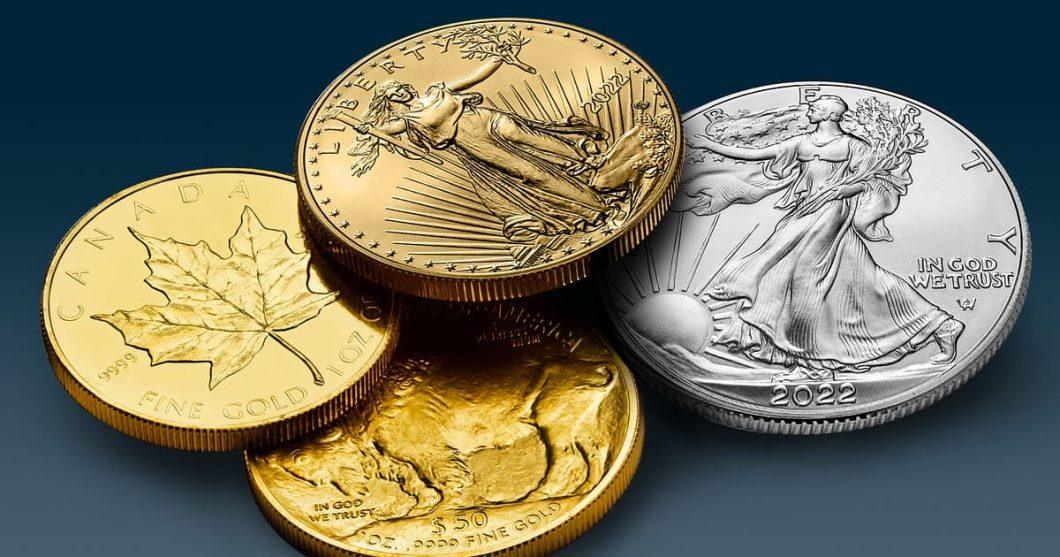
So what is the best precious metal to invest in? Knowing where to put your money may be challenging in any economy. Stocks, bonds, exchange-traded funds, mutual funds, and other conventional investment vehicles provide many options for investors. Additionally, these are just some of the investing opportunities out there.
Investors have broader opportunities to diversify their portfolios beyond the more typical routes. This includes gold and other precious metals, now in great demand. Gold’s distinct advantages make it a popular choice among investors, particularly during economic uncertainty or rising inflation.
Benefits and Drawbacks of Precious Metals
While gold is one of the most common choices for buyers seeking ways to broaden their investment portfolios and hedge against economic turbulence, there are several precious metals you should consider including in your portfolio, each with its characteristics, benefits, and drawbacks.
Gold may be the most popular precious metal investment, but investors should also be familiar with silver, platinum, and palladium. The following discussion of their possible benefits and drawbacks should help you choose the best option for your investment portfolio.
Gold
The Benefits of Investing in Gold
History: Gold has been used as wealth and an asset with value for ages. It is a safe investment in economic uncertainty due to its stable value against various currencies.
Liquidity: Gold’s excellent liquidity means it can be bought and sold quickly and readily in practically any nation globally in any form (bars, jewelry, coins, etc.). It also has a high marketability over a wide range of economic conditions.
Diversification: Gold is a great portfolio diversifier because of its low connection to other traditional asset classes like equities and bonds.
High Demand: Gold has a wide variety of applications in industrial uses. Continuous demand results from its features, which make it applicable in the healthcare, transportation, electronics, and security sectors, among others.
Inflation Hedge: Gold is a popular asset as a hedge against inflation since it maintains its value even while paper currencies depreciate.
The Drawback of Investing in Gold
Income: Gold, unlike stocks and bonds, lacks in income. If you invest entirely in this precious metal, you can lose the benefit of payments of dividends or earnings from interest.
Volatility: Although gold is often regarded as a safe investment, its price has been known to swing wildly in recent years.
Storage Fees: Safely keeping gold requires extra expenses, such as renting a safe deposit box or a vault.
Silver
The Benefits of Investing in Silver
Affordability: Silver is usually less expensive than gold because of its lower price. As a result, a broader spectrum of investors may get their hands on this valuable metal.
Demand: Silver’s industrial uses may lead to more demand and higher prices.
Inflation: Silver, like gold, may be used as a hedge against inflation, which is particularly important in today’s economy, where inflation has persisted for some time.
History: Silver’s lengthy history as an instrument of exchange and store of value speaks to the metal’s historical significance.
The Drawback of Investing in Silver
Volatility: Silver prices are more prone to wild fluctuations than gold prices are, on average.
Downturns: Silver’s high industrial demand may be problematic since it makes the metal vulnerable to price drops during economic downturns.
Platinum
The Benefits of Investing in Platinum
Industrial: Platinum has several industrial uses, but the auto and jewelry sectors are two of the biggest consumers.
Rarity: Platinum’s ongoing worth may be enhanced because it is rarer than gold and silver.
Diversification: Platinum is a great way to broaden your precious metals holdings beyond the traditional gold and silver.
The Drawback of Investing in Platinum
Volatility: Platinum is a hazardous investment because of its unpredictable pricing.
Limited Investments: Investing in platinum is more restricted, with just coins and bars available, than investing in gold or silver.
Palladium
The Benefits of Investing in Palladium
Automotive Demand: Advantages of Investing in Palladium in the automotive sector due to its essential role in catalytic converters, palladium is in high demand in the automotive sector.
Restrictions: Price increases may result from supply restrictions, such as those caused by a lack of mining output or geopolitical tensions.
Performance: Palladium’s current good performance is shown by its remarkable price increases over the last several years.
The Drawback of Investing in Palladium
Data: The absence of long-term past information on palladium makes it more difficult to anticipate its performance than that of gold and silver.
Volatility: Like silver, palladium’s value is highly attuned to industrial demand, which is susceptible to the ups and downs of the economy.
Conclusion
Whatever precious metal you choose to invest in should be determined by your financial objectives, level of risk appetite, and forecast for the market as a whole. Gold is still trusted for storing riches, but silver is cheap and has practical use. Investing in platinum and palladium might provide you with more alternatives and significant profits, but it also comes with more risk.
A diversified investment portfolio may incorporate a mix of these precious metals for the most significant rewards and minimize risks. It would help if you did your homework first to make the greatest possible financial choice while investing in the precious metals market.

